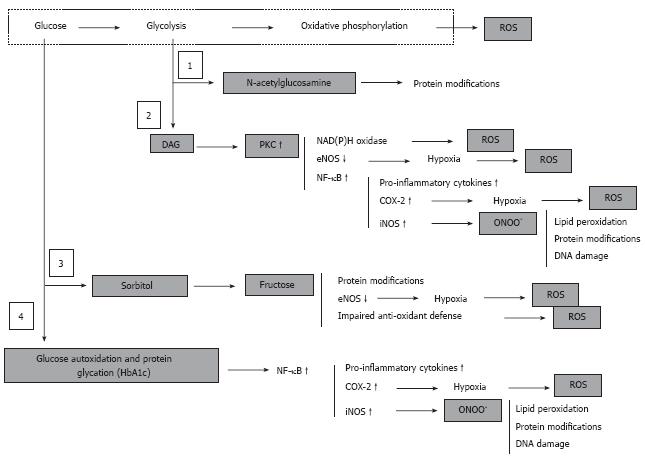Copyright
©2007 Baishideng Publishing Group Co.
World J Gastroenterol. Jan 14, 2007; 13(2): 175-191
Published online Jan 14, 2007. doi: 10.3748/wjg.v13.i2.175
Published online Jan 14, 2007. doi: 10.3748/wjg.v13.i2.175
Figure 6 Hyperglycemia, derangement of cell metabolism and oxidative/nitrosative stress.
Hyperglycemia associates with accumulation of fructose-6-phosphate and hexosamine pathway (1) to N-acetylglucosamine, accumulation of dihydroxyacetone phosphate and associated activation of PKC (2), activation of polyol sugar pathway (3), and glucose autoxidation and non-enzymatic protein glycation (4). These metabolic events are either regular physiologically important components cell metabolism (1, 2 and 3) or are normally under strict control of intrinsic intracellular defense mechanisms (4). However, under conditions of chronic hyperglycemia activation of these pathways leads to a global derangement of the cell and tissue homeostasis, which culminates in an uncontrolled cascade of abnormal protein modifications, oxidative/nitrosative stress and pro-inflammatory conditions.
- Citation: Dobretsov M, Romanovsky D, Stimers JR. Early diabetic neuropathy: Triggers and mechanisms. World J Gastroenterol 2007; 13(2): 175-191
- URL: https://www.wjgnet.com/1007-9327/full/v13/i2/175.htm
- DOI: https://dx.doi.org/10.3748/wjg.v13.i2.175









